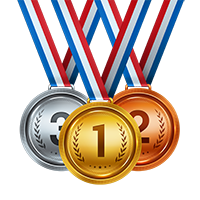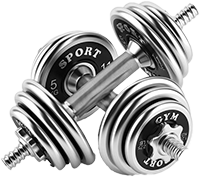Welcome to the ultimate comprehensive guide that will empower you to craft a fitness diet routine tailored to your goals and preferences. In this in-depth article, we will walk you through six essential steps that will help you create a personalized plan to achieve your desired health and wellness outcomes. Whether you aspire to lose weight, build muscle, boost energy levels, or simply improve your overall well-being, this guide has got you covered. So, let’s delve into the details and embark on an exciting journey towards a healthier you!
Setting clear and realistic goals is the foundation of any successful fitness diet routine. Before diving into the specifics, take some time to reflect on what you truly want to achieve. Do you aim to lose a certain amount of weight, gain muscle mass, enhance athletic performance, or simply adopt a healthier lifestyle? Identifying your objectives will provide you with a sense of direction and motivation throughout your journey.
Start by writing down your primary goals and be as specific as possible. For example, instead of saying “I want to lose weight,” specify how much weight you intend to lose and the timeframe in which you aim to achieve it. Once you have a clear vision of your goals, break them down into smaller, manageable targets that you can work towards on a weekly or monthly basis. This will help you stay focused and track your progress effectively.
Additionally, it’s crucial to ensure that your goals are realistic and attainable. Unrealistic expectations can lead to frustration and discouragement. Consult with a healthcare professional, such as a registered dietitian or personal trainer, who can provide guidance and help you set realistic goals based on your individual circumstances and current health status.

Understanding your current eating habits is an essential step in creating an effective fitness diet routine. By assessing your dietary patterns, you can identify areas that require improvement and make informed decisions about the changes you need to implement.
Start by keeping a food diary for at least one week. Record everything you eat and drink, including portion sizes and specific ingredients. Be honest with yourself and don’t forget to include snacks and beverages. This will provide you with a comprehensive overview of your daily food intake and highlight any patterns or areas where you may need to make adjustments.
Review your food diary and analyze your eating habits. Look for any unhealthy patterns, such as excessive consumption of processed foods, sugary drinks, or late-night snacking. Identify triggers that lead to unhealthy choices, such as stress or boredom. Recognizing these patterns will help you develop strategies to overcome them.
In addition, pay attention to portion sizes. Portion control plays a vital role in maintaining a healthy weight and balanced nutrient intake. Assess if you tend to overeat or if you could benefit from smaller, more frequent meals throughout the day.
Creating a balanced meal plan is the cornerstone of a successful fitness diet routine. A well-designed meal plan ensures that your body receives the necessary nutrients to support your goals and optimize your overall health and performance.
Focus on incorporating a wide variety of nutrient-dense foods into your daily meals. These include fruits, vegetables, lean proteins, whole grains, and healthy fats. Aim for a colorful plate that includes a variety of fruits and vegetables of different types and colors. This ensures a diverse array of vitamins, minerals, and antioxidants.
When selecting proteins, choose lean options such as skinless poultry, fish, legumes, tofu, or low-fat dairy products. These protein sources provide essential amino acids to support muscle repair and growth.
Whole grains, such as brown rice, quinoa, whole-wheat bread, and oats, should form the basis of your carbohydrate intake. They provide fiber, B vitamins, and sustained energy throughout the day.
Healthy fats are also an important component of a balanced meal plan. Incorporate sources like avocados, nuts, seeds, olive oil, and fatty fish, such as salmon or mackerel. These fats provide essential fatty acids and help support brain function and overall well-being.
Consider your personal preferences and cultural background when designing your meal plan. This ensures that you enjoy the foods you eat and are more likely to stick with the routine in the long term. Experiment with different recipes, flavors, and cooking methods to keep your meals exciting and diverse.
Planning and preparing your meals in advance is a practical strategy to stay on track with your fitness diet routine. By dedicating time to meal prep, you can save time and ensure that nutritious options are readily available when hunger strikes.
Start by creating a weekly meal plan that includes breakfast, lunch, dinner, and snacks. Consider your schedule, work commitments, and personal preferences when deciding what to eat each day. Write down a shopping list based on your meal plan to ensure you have all the necessary ingredients on hand.
Set aside a specific time each week for meal preparation. This can be on the weekend or any day that works best for you. Choose a block of time when you can focus solely on preparing and portioning your meals for the upcoming week.
Invest in meal prep containers to store your meals and snacks conveniently. Portion out your meals according to your planned servings to avoid overeating. This practice will help you manage portion control and eliminate the need for impulsive and potentially unhealthy food choices.
Additionally, consider preparing some versatile ingredients, such as grilled chicken breast or roasted vegetables, that can be used in multiple meals throughout the week. This will save you time and add variety to your meals.
Regularly monitoring your progress is vital to evaluate the effectiveness of your fitness diet routine and make necessary adjustments along the way. Tracking your meals, energy levels, exercise routine, and overall well-being can provide valuable insights into what works best for your body.
Keep a journal or use a food tracking app to record your daily food intake and any relevant observations. This will help you identify patterns, such as how certain foods make you feel or if there are any specific triggers that affect your eating habits.
Pay attention to how your body responds to different foods. Note any changes in energy levels, digestion, mood, and physical performance. Some individuals may find it beneficial to track additional factors like sleep quality, stress levels, and hydration.
Based on your observations, make necessary adjustments to your meal plan and overall approach. This could involve tweaking portion sizes, altering macronutrient ratios, or modifying the timing of your meals and snacks. Consult with a registered dietitian or healthcare professional for personalized guidance and advice.
Remember that progress takes time, and no two individuals are the same. Be patient with yourself and avoid comparing your journey to others. Celebrate every small milestone along the way and focus on the positive changes you are making for your health and well-being.
Consistency is key when it comes to achieving long-term success with your fitness diet routine. Stay committed to your plan, but also remain flexible and adaptable as your circumstances evolve.
Develop a positive mindset and embrace the journey as a lifestyle change rather than a short-term fix. Avoid restrictive diets or extreme measures that are difficult to maintain in the long run. Instead, focus on building healthy habits that can be sustained over time.
Surround yourself with a supportive community of like-minded individuals who share similar goals. Engage in physical activities that you genuinely enjoy, as this will make it easier to incorporate exercise into your routine. Regular movement and physical activity are crucial for overall health and complement a balanced diet.
Remember to practice self-care and prioritize your mental and emotional well-being. Manage stress levels through relaxation techniques, such as meditation or deep breathing exercises. Get enough sleep to support recovery and maintain optimal energy levels.
Allow yourself occasional indulgences and treats without guilt. Depriving yourself completely of the foods you love can lead to feelings of resentment and potential setbacks. Practice mindful eating and savor your meals, paying attention to flavors and textures.
Congratulations! You have completed the six essential steps to create your perfect fitness diet routine. By defining your goals, evaluating your current eating habits, designing a balanced meal plan, planning and preparing your meals in advance, monitoring your progress, and maintaining consistency with a positive mindset, you are well on your way to achieving your desired health and wellness outcomes.
Remember, this is a journey unique to you. Embrace the process and be open to adjusting your approach as you learn more about your body’s responses and individual needs. Consult with professionals when needed, and trust in your ability to make lasting changes for a healthier and happier lifestyle. With dedication, perseverance, and self-compassion, you will reach your goals and enjoy the benefits of a well-crafted fitness diet routine.

